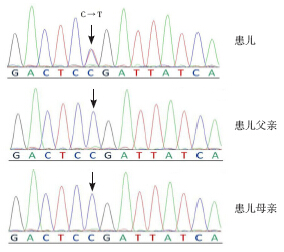 PDF(1302 KB)
PDF(1302 KB)


STXBP1 gene mutation in newborns with refractory seizures
LIU Li-Li, HOU Xin-Lin, ZHOU Cong-Le, TANG Ze-Zhong, BAO Xin-Hua, JIANG Yi
Chinese Journal of Contemporary Pediatrics ›› 2014, Vol. 16 ›› Issue (7) : 701-704.
 PDF(1302 KB)
PDF(1302 KB)
 PDF(1302 KB)
PDF(1302 KB)
STXBP1 gene mutation in newborns with refractory seizures
Objective To study the relationship between STXBP1 gene mutations and refractory seizures with unknown causes in newborns. Methods The coding region of STXBP1 gene was detected using direct Sanger sequencing in 11 newborns with refractory seizures of unknown causes. Results STXBP1 gene mutation was found in 1 out of 11 patients. It was a missense mutation: c.1439C>T (p.P480L). Conclusions STXBP1 gene mutation can be found in neonatal refractory seizures of unknown causes, suggesting a new approach of further research of this disease.
